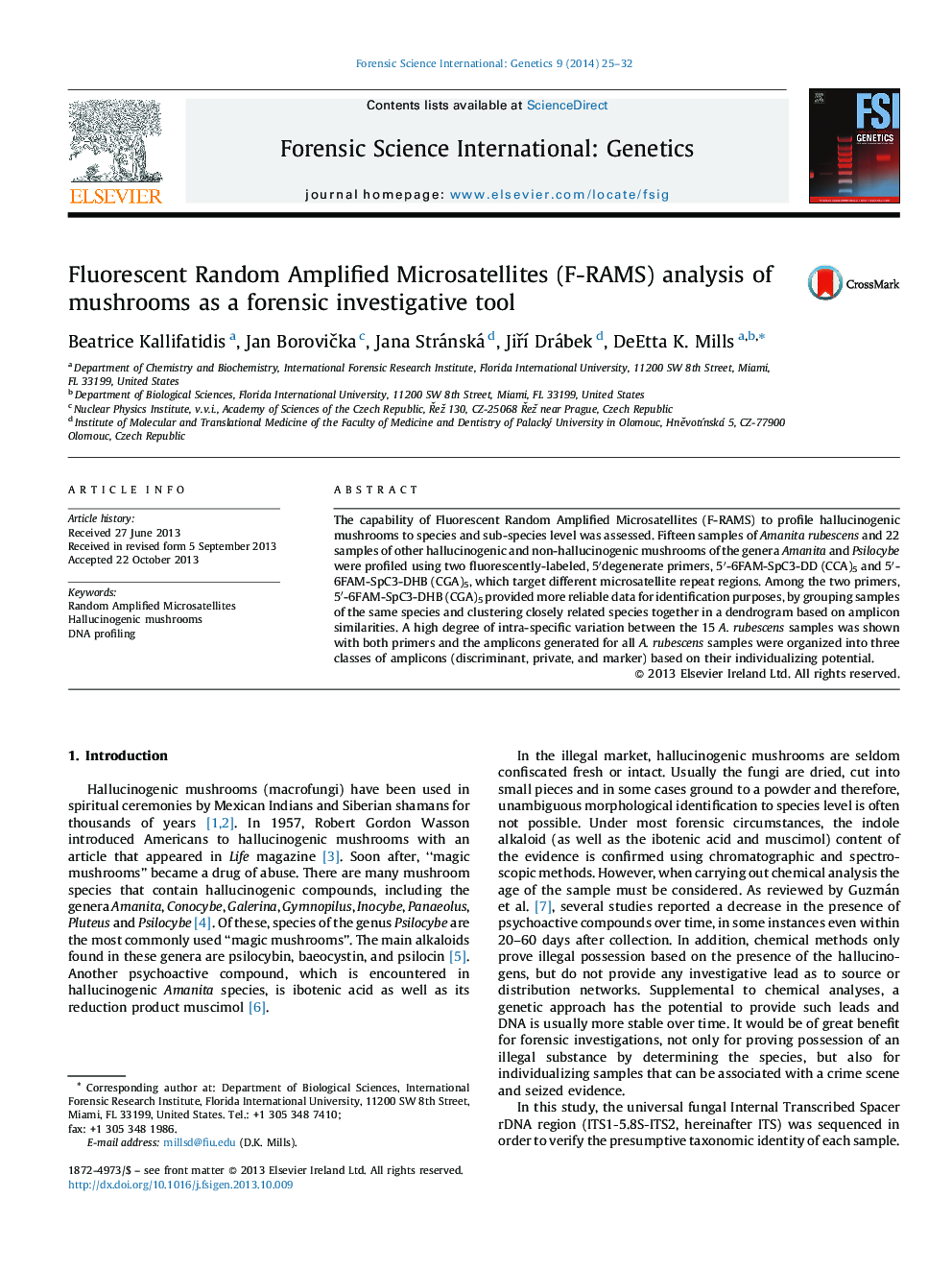| Article ID | Journal | Published Year | Pages | File Type |
|---|---|---|---|---|
| 6554156 | Forensic Science International: Genetics | 2014 | 8 Pages |
Abstract
The capability of Fluorescent Random Amplified Microsatellites (F-RAMS) to profile hallucinogenic mushrooms to species and sub-species level was assessed. Fifteen samples of Amanita rubescens and 22 samples of other hallucinogenic and non-hallucinogenic mushrooms of the genera Amanita and Psilocybe were profiled using two fluorescently-labeled, 5â²degenerate primers, 5â²-6FAM-SpC3-DD (CCA)5 and 5â²-6FAM-SpC3-DHB (CGA)5, which target different microsatellite repeat regions. Among the two primers, 5â²-6FAM-SpC3-DHB (CGA)5 provided more reliable data for identification purposes, by grouping samples of the same species and clustering closely related species together in a dendrogram based on amplicon similarities. A high degree of intra-specific variation between the 15 A. rubescens samples was shown with both primers and the amplicons generated for all A. rubescens samples were organized into three classes of amplicons (discriminant, private, and marker) based on their individualizing potential.
Related Topics
Life Sciences
Biochemistry, Genetics and Molecular Biology
Genetics
Authors
Beatrice Kallifatidis, Jan BoroviÄka, Jana Stránská, JiÅÃ Drábek, DeEtta K. Mills,
